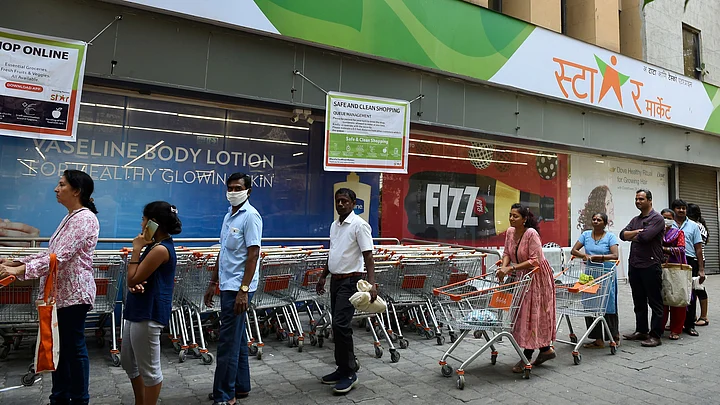Did the lockdown make India feel the pinch in its wallet? An Ipsos Cost of Living Survey shows a “major jump in spends on food, essential commodities and services for most urban Indian households” as a result of the coronavirus lockdown.
Indian citizens are not the only ones who have ended up with higher expenditure during this time – 60 percent of global citizens reported increased expenditures.
Interestingly, the Ipsos survey has found that it wasn’t increases in prices that led to these increased expenditures, but other factors, as Amit Adarkar, CEO of Ipsos India explained:
“It is not that the food items became dearer, making the budgets hit the roof. The consumers per se have been turning to food for comfort and mood elevation to fight the lockdown blues and the household budgets have been redirected to food in the absence of other forms of entertainment and lack of avenues and outlets for recreation and rejuvenation. Also, supply and distribution constraints may have forced consumers to buy large packs or upgrade to an expensive brand in the absence of full choice.”
The survey was conducted between 22 May and 5 June, across 26 different countries.
WHERE DID INDIANS SEE MAJOR INCREASES IN EXPENDITURE
The survey found people had ended up increasing their expenditure in 11 broad areas, from groceries to education and childcare.
- Among those surveyed, the most common answer on what saw increased expenditure was groceries and food, with 62 percent of Indians saying they had increased spending on these. This is almost exactly the same as the global average of 62 percent of people who reported spending more on these items.
- 46 percent of those surveyed said they had spent more on utilities during this time. This was perhaps expected, as spending more time at home means racking up higher electricity bills, for instance.
- The second-most common area of increased expenditure for urban Indians was healthcare (49 percent), which Ipsos attributes to “emphasis on frequent hand wash and sanitiser usage, active interest in immunity enhancing products” which “led to hitherto unbudgeted health related expenses.” This was significantly higher than the global average of 27 percent. Similarly, 23 percent of urban Indians also reported higher insurance expenditure.
- Entertainment was an interesting choice for increase in expenditure (32 percent of the respondents). Ipsos notes that the findings reveal a rejigging of priorities during COVID-19, as “Everything has centred around one’s home, the safe cocoon for nourishment, comfort, entertainment and joy, during the bleak period.” Here too, the Indian figures are higher than the global average, but only by seven percentage points.
- A slightly strange area for increased expenditure is transportation, with 31 percent of urban Indians saying they spent more on this. Perhaps this is indicative of the difficulty in getting taxis or any form of public transport in situations where travel is allowed. This again is significantly higher than the global average of 17 percent who spent more on transport.
- 21 percent of urban Indians also spent more on education and childcare, likely due to the increased educational resources required with schools shut.
WHAT DROVE THE INCREASED SPENDING?
As mentioned, it wasn’t an increase in prices that led to these increased expenditures. Instead, the Ipsos survey found that the most widely blamed reasons for increased spending in urban India were:
- Choosing more expensive items during the lockdown – 57 percent of people polled.
- Being at home – 47 percent of people polled.
India wasn’t alone in this – 50 percent of global citizens cited the lockdown itself, and finding ways to cope with it, as the reasons for the increased expenditure. In some countries, this was a much higher percentage than India, for example Peru (78 percent), Mexico (72 percent) and Chile (72 percent).
The survey also found that 28 percent urban Indians claim to have purchased new, better quality goods and services during the lockdown.
Ipsos CEO Adarkar explained this redefinition of consumption preferences in the following way:
“Consumers are looking for trade-offs – lack of opportunities for eating out and entertainment has led to indulgence, to infuse happiness. With the lockdown,the opportunity to spend on ‘experiences’ such as mall hopping, eating out,meeting over tea or coffee, watching a movie in a multiplex was non-existent.”
